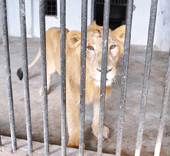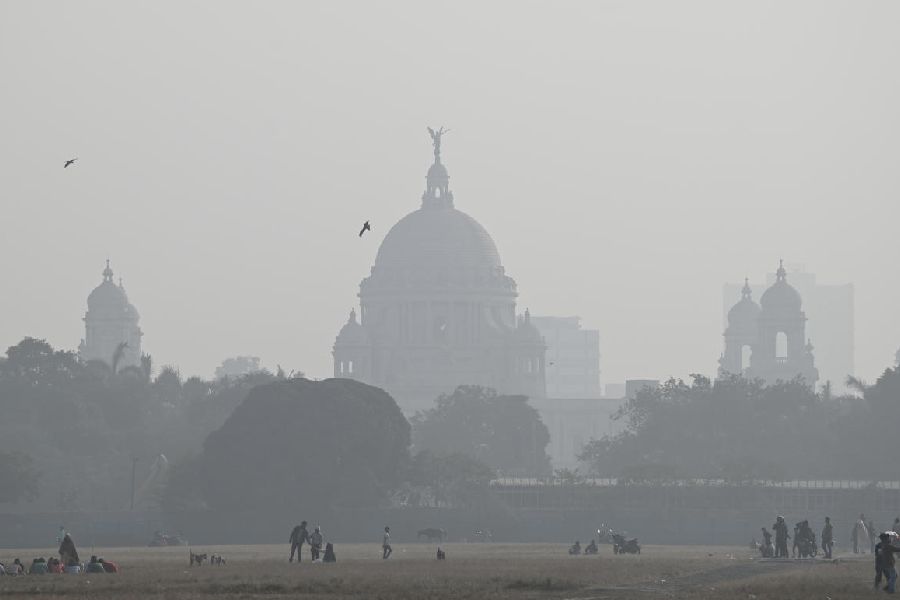 |
 |
| The cramped enclosures of a lion and a leopard at Alipore zoo |
The city zoo, which Union environment and forest minister Jairam Ramesh has dubbed “overcrowded”, flouts several conditions laid down in a central notification to ensure proper upkeep of animals.
Zoo director Raju Das begs to differ but a comparison between the Centre’s prescription and the reality lays bare how cramped the Alipore facility is.
The 2009 notification of the environment and forest ministry states that a “large” zoo must have 75 hectares for 750 animals of 75 species, or 0.1 hectare for every animal on an average.
The Alipore zoo, in contrast, has only 18 hectares for as many as 1,300 animals of 130 species. The space for each inmate — 0.013 hectare — is at least 10 times less than the norm.
As for large mammals, the Central Zoo Authority prescribes around 1,000sq m for a pair of tigers and lions and 2,000sq m for a pair of rhinos and hippos. Going by the benchmark, the 22 animals of the four species the Alipore zoo has should get around 14,000sq m of enclosure space. The actual allotment is a lot less.
Moving on to the “qualitative” aspects, the ministry norms state that the animals should be kept “in naturalistic settings” and the zoo authorities must ensure that the “animals are not unduly disturbed”.
“Each animal enclosure shall have appropriate shelters, perches, withdrawal areas, pools, drinking water points and such other facilities which can provide the animals a chance to display the wide range of their natural behaviour as well as protect them from extremes of climate,” the ministry notification states.
The settings for the animals at the city zoo are anything but “naturalistic”, the enclosures bereft of most of the facilities that could make the inmates feel at home.
Union minister Ramesh’s suggestion to shift some of the larger animals to give them, and the rest, some breathing space is unlikely to be implemented following problems over land acquisition.
Director Das, who denied while talking to Metro recently that the zoo was overcrowded, said: “The Central Zoo Authority has asked us to decongest the zoo and shift some animals to a satellite facility. The relocation, however, will be difficult as the government had faced problems acquiring land in Bhagawanpur (where the satellite zoo was proposed to be set up).”
The director, rather, claimed that the authorities had been planning a “lot of new things to optimise the space use”, including setting up of a sprawling food court with 14 outlets. He claimed that there had been a “qualitative change” at the zoo over the past one-and-a-half years and more space would be allotted to the animals.
The Central Zoo Authority, however, is under the impression that the relocation was on track. “I understand they have been trying to shift some animals to a satellite facility,” B.S. Bonal, the member-secretary of the authority, said over the phone from from Delhi.
When Metro visited the zoo, tigers and lions were still housed in enclosures around 20ftx15ft. Ditto for several other large animals.
Many experts feel that the “qualitative change” director Das has referred to was nothing but “cosmetic changes”.
“Apparently Calcutta zoo has been better showcased in recent times but showcasing is different from scientific management. Not just Calcutta zoo, most zoos in India violate the 2009 notification,” said Bipul Chakrabarty, a former scientific officer of the Central Zoo Authority.
As for the food court and other large-scale construction going on at the zoo, Chakrabarty said the authority should ensure they did not jeopardise the welfare of the animals.










